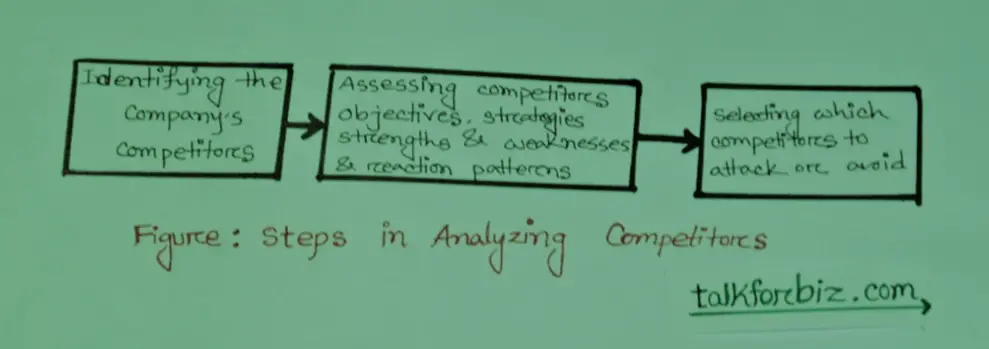Competitor analysis tools are very essential for marketing. In maximum time competitor makes thing happen. Because if they make any mistake in the decision of their product, they can lose the competitive advantages in the market. In short, today’s customer seeks for those advantages between two brands. However, check – Interactive communication channels.
See the below figure:

Here, I’ll discuss this matter.
Identifying competitors
The first step in competitors analyzing is identifying its key competitors. Normally, this task seems so simple but in reality, it’s not much easy. A company first identifies who make the same product as they make & sell at the same e price in the market.
Assessing competitors
After completing the first task, marketing management can ask some question like competitor’s objectives, target marketplace, competitor’s strategy, their strengths & weaknesses & competitor’s reaction. Gather knowledge on – integrated marketing communications program.
- Determining competitors objectives
- Identifying competitors strategies
- Assessing competitors strengths & weaknesses
- Estimating competitors reactions
Selecting competitors to attract & avoid :

Every company should identify its major competitors based on their market position, target customer & marketing mix strategies. After that, marketing managers should decide how to compete with competitors.
1. Strong or weak competitors: Most companies like to compete with weak competitors. In this competition, fewer resources & time is needed. So, little competition brings little gain. That’s why; a company needs to compete with strong competitors. It helps to sharpen the abilities of the company. But sometimes, the company may not avoid its strong competitors. Because the strong competitors may have weaknesses & succeeding that provide the greater returns. There is a useful tool that assessing the strengths & weaknesses of competitors is customer value analysis. It is the way to determine how the target customer reacts over the value offers of the competitor’s product. In this way, company first analysis customer value, the importance of place on these attributes & assesses the performance of competitors valued attributes
2. Close or distant competitors: Some companies compete with the close competitors rather than the distant competitors. Thus Nike, a well-known brand always competes against Adidas. Nike never competes with other brands like Keen or Timberland.
Target always competes against Wal-Mart. It never competes against Neiman Marcus or Nordstrom.
At the same time, the company wants to destroy its major competitors.
3. Good or bad competitors: having competitors is a blessing. Because it keeps in many ways.
- Share the costs of market
- Market development
- Help to legitimize new technologies
- Lead to more product differentiation
- Finally, helps to increase total demand
For example: recently Apple introduced a stylish & trendy iPod tablet that created trouble for Amazon’s smaller, dowdier Kindle e-reader, which had introduced three years before. The competing iPod created demand for both companies. Apple now enjoys a major share in the high priced market whereas Amazon’s Kindle leads the market for low –priced tablets. However, all the competitors may not benefit. There exist some good competitors & bad competitors. Good competitors maintain the rules of the industry but bad competitors break the rules of the industry. These bad are wanted to buy share rather than earn it, sometimes take large risks to play with their own rules. For example, the nation’s traditional newspaper may face a lot of bad co0mpetitors because of technology. Bad competitors may offer free home delivery, free real-time content & many others. Along with this, enhance yourself on – Channel Management decisions.
Finding uncontested market spaces
Some companies compete their strong competitors in the head to head. At the same time, some other companies try to find out something different from the traditional copied market. They seek out unoccupied positions in the uncontested marketplace. They try to create a product which has no direct competitors. This approach is called a blue ocean strategy. Its goal is to make competition irrelevant.
